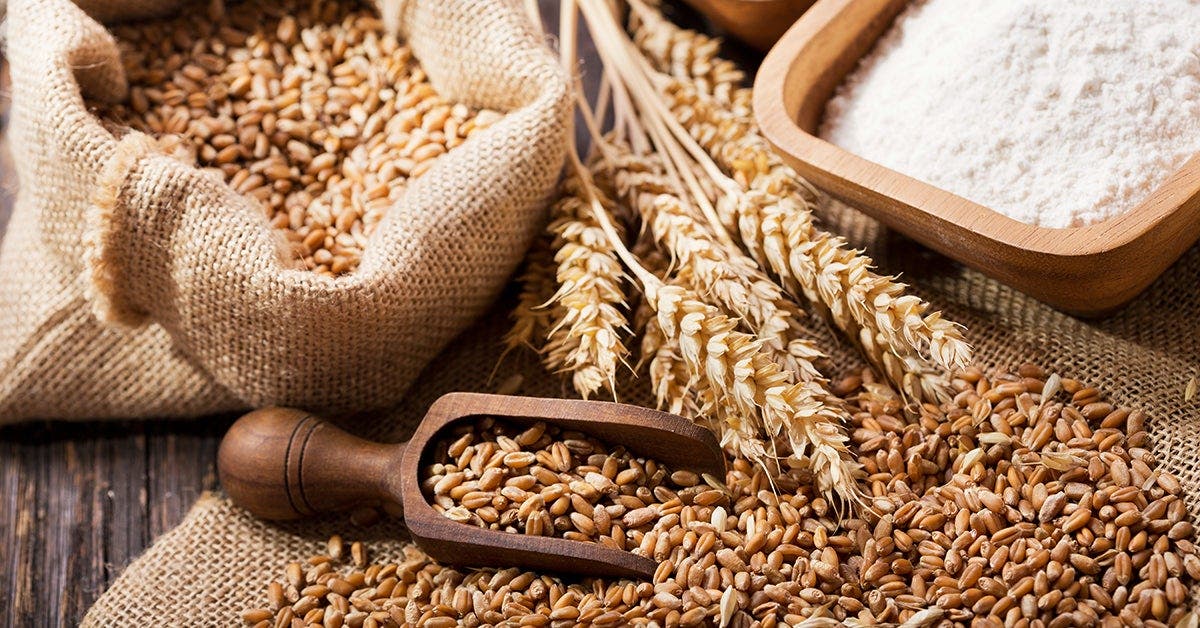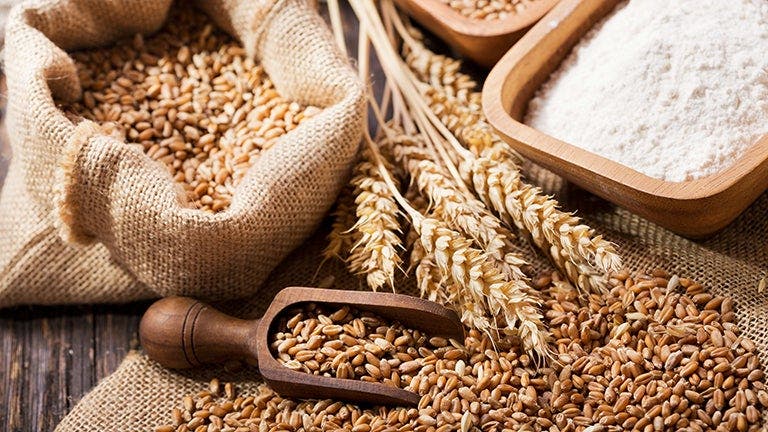13 Whole Grains to Add to Your Diet


If you’re angling to add delicious depth to meals while supporting your overall health, get into whole grains—foods like wheat, oat, and rice in their complete form.
“Most of a grain’s nutrition and flavor are concentrated in the parts that are removed in refined grains,” says Kelly Toups, RD, director of nutrition for the Whole Grains Council, a nonprofit group that educates consumers about the benefits of whole grains. That means whole-grain foods pack more fiber, protein, vitamins, and minerals than their refined versions do. Just as noteworthy: Many people find whole grains a whole lot tastier, too.
Keep reading for the scoop on the health benefits of whole grains, plus tons of recipe inspo to help you dial up the whole grains in your diet.
What are whole grains?
A whole grain is the entire seed—sometimes called the kernel—of a grain plant. This mighty little package is made up of three parts:
- Bran: This is the outer skin of the seed, and it has the most fiber of the three components. It also contains B vitamins and antioxidants.
- Germ: This is the seed’s embryo, as it’s the part that can sprout into a new plant. It contains B vitamins, as well as protein, minerals, and unsaturated fats.
- Endosperm: Although this is the largest part of the seed, it only contains small amounts of fiber, vitamins, and minerals. It’s primarily made up of carbohydrates and some protein. If the seed were to sprout, the endosperm would provide energy to the germ and young plant.
When a grain is commercially refined, the bran or germ is stripped away (sometimes both components are!). While this doesn’t make a food “bad,” it can seriously ding its nutrient profile. “Refined wheat, for example, has 28% less protein than whole wheat,” Toups says. Some food makers fortify their products to replace lost nutrients. The term “enriched” on an ingredient list means vitamins and minerals were added after the fact.
While most whole grains come from plants classified as cereal grains, a few are considered honorary members of the fam because they’re nutritionally similar and used in comparable ways, Toups says. Amaranth, quinoa, and buckwheat are some of the unofficial grains on this list—they’re seeds from plants not classified as cereal grains.
Health benefits of whole grains
Whole grains are high in fiber, which adds bulk to your diet. Fiber-rich foods can help meals feel more satisfying, which may be why a higher fiber intake is associated with lower body weight. On a digestive note, fiber’s reputation for preventing constipation is well deserved, confirms Robin Foroutan, an integrative medicine dietitian and spokesperson for the Academy of Nutrition and Dietetics.
Fiber isn’t all you’ll get, either. Whole grains contain protein, vitamins, and minerals. Research has found that the more whole grains a person has in their everyday diet, the lower their risk of colorectal cancer, type 2 diabetes, and heart disease.
Adults need 25–36 g of fiber per day, according to the 2020–2025 Dietary Guidelines for Americans, but research suggests only 5% of U.S. adults consistently hit the mark. Fiber-rich whole grains can help fill the gap. As a general rule of thumb, the Dietary Guidelines recommend that at least half of the grains you eat are whole grains, which works out to three to five servings a day. Examples of single servings include ½ cup of brown rice or quinoa, one slice of whole-grain bread, 1 cup of whole-grain cereal … we could go on. And we will! Learn more about specific whole grains below.
List of whole grains
When many of us think “whole grains,” whole wheat is what jumps to mind. It’s the most common whole grain used in food items like bread and pasta, according to the Whole Grains Council. But there are many other whole grains, each with its own incredible flavor and nutritional profile. Try experimenting with the tasty options below—cooked whole, used ground as flour, or in a commercially made food—and you’re sure to find a few new favorites.
1: Bulgur
Just 1 cup of cooked bulgur contains 8 g of fiber—about a quarter of what most adults need in a day. Bulgur shines in tabbouleh, but its mild taste makes it a perfect addition to soups and chilis, too. You can even sub it in for oatmeal at breakfast.
2: Quinoa
This small seed is a complete protein, which means it contains all nine essential amino acids the body can’t produce on its own. Quinoa is also rich in potassium and antioxidants. Warm or chilled, quinoa has a satisfying firm yet chewy texture, making it ideal as a side dish or as part of a salad. You can also find it as a common ingredient swap in homemade dishes (hello, quinoa paella) or packaged staples like Carrington Farms Cracked Pepper & Sea Salt Crounons.
3: Barley
Of all the grains on this list, barley contains the most beta-glucan, a fiber that may help lower levels of LDL cholesterol and have beneficial effects on blood sugar. Enjoy barley’s nutty flavor in a salad or soup, or try it as a swap for white rice. Just be sure to look for whole-grain or hulled barley—the pearled variety has no bran, so it’s not a whole grain.
4: Brown rice
Brown rice contains up to twice the amount of fiber, as well as nine times the potassium, as white rice. Cook up a batch of this nutty-tasting grain as a side dish, and then use the leftovers as a base for fried rice another day.
5: Oats
With their high fiber content and versatility, oats* are a great ZeroPoint food to add to your rotation. Those no-cook overnight-oats recipes everyone’s been loving? They’re not just convenient and delicious; they’re also nutritious. Like barley, oats are high in beta-glucan fiber. Plus, 1 cup of cooked oats contains nearly 6 g of protein—about what you’d get in a large egg.
6: Teff
This tiny, dark seed is the most protein-rich option on our list: A 1-cup serving of teff clocks in at nearly 10 g of the nutrient. It also has 123 mg of calcium, nearly what you’d get in ½ cup of milk. Try using teff flour in baking, Toups suggests. Thanks to its slightly sweet flavor, it works especially well in desserts.
7: Rye
Rye bread is packed with flavor and nutrients. In addition to beta-glucan, rye provides magnesium, phosphorus, copper, selenium, and niacin. Take your favorite sandwich to the next level by using rye toast as your base.
8: Sorghum
Sorghum tops this list when it comes to disease-fighting antioxidants, and it’s also high in fiber, magnesium, and vitamin B3. Sorghum has a mild, earthy flavor and a chewy texture. Toss it into your favorite salad or pop it like corn for a crunchy snack.
9: Amaranth
Amaranth is another high-protein entry: One cup of this grain contains 9 g of the nutrient. Like quinoa, amaranth is a complete protein. This grain has a creamy texture when cooked, making it ideal for thickening soups and stews.
10: Millet
Millet is a small, yellow grain with a mild, slightly sweet flavor. One cup of cooked millet provides more than 20% of the recommended dietary allowance of manganese, a mineral that helps regulate inflammation and support brain and bone health. This grain adds a satisfying texture to salads and can replace couscous as a side dish.
11: Corn
That’s right: Every time you sink your teeth into juicy corn on the cob or munch a bowl of popcorn, you’re having a whole grain! This sweet grain is packed with carotenoids such as lutein, which supports eye health. Both corn* and popcorn* are ZeroPoint foods!
12: Wild rice
Wild rice is high in protein, with nearly 7 grams in a cooked 1-cup serving. And fun fact: This flavorful grain isn’t really rice—it’s the seed of a grass. Wild rice pilaf pairs perfectly with fish or chicken, and you can also add this grain to your favorite soup or salad.
13: Buckwheat
Another complete protein, this whole grain is also rich in minerals such as magnesium, copper, and manganese. Buckwheat has a robust flavor and lends a firm texture to soba noodles. You can also toast the grain and sprinkle it on a salad, or use its flour in bread or pancakes.
Good to know: As you incorporate more of these nutritional powerhouses to your daily meals and snacks, you may want to add a rice cooker to your kitchen setup. Despite its name, you can also use it to make other whole grains, including quinoa, barley, and oats.
The upshot: Are whole grains healthy?
Adding more whole grains to your diet is a simple way to boost your intake of fiber, vitamins, minerals, and antioxidants. Diets high in whole grains are associated with a lower risk of developing many diseases and may support healthy weight management over time. When you’re shopping for packaged food items made from grains, opt for those that list whole grains as their first ingredient, and aim to incorporate a variety of grains into your meals.
*not a ZeroPoint food on the Diabetes Program
--
Mallory Creveling is a freelance writer and personal trainer based in Brooklyn. Her work has appeared in Shape, Women’s Health, Runner’s World, Reader’s Digest, and Men’s Journal.
--
This article was reviewed for accuracy in July 2021 by the WW Science Team, a dedicated group of experts who ensure all our solutions are rooted in the best possible research.
